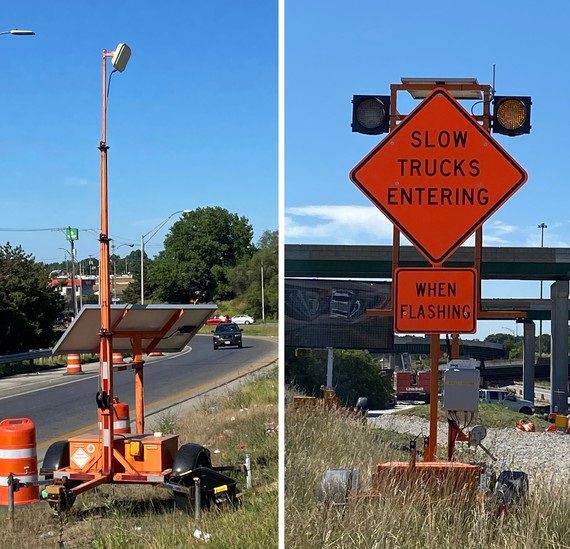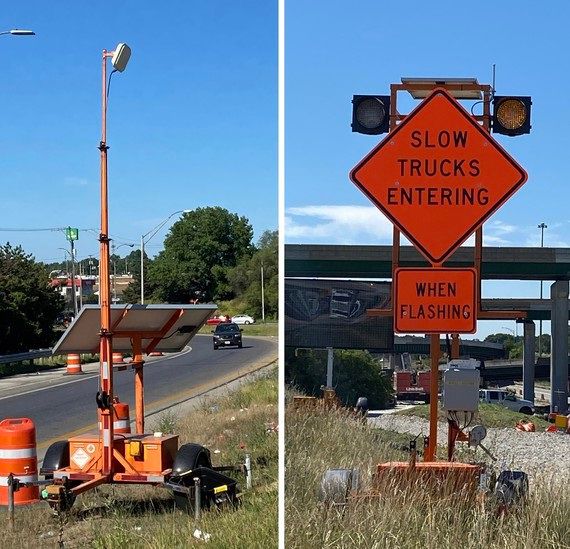COLUMBUS, Ohio — The Ohio Department of Transportation introduced new technology in work zones in an effort to make them safer for workers and drivers.
ODOT implemented extra safety measures along I-70, I-71 and Route 315 as construction continues in downtown Columbus.
ODOT added queue detection systems along SR 315 south and I-70 east to alert drivers of slow traffic ahead and to address potential backups. The system includes sensors along the road that detect the speed of traffic and relay the information to digital message boards.
The boards let drivers know their real-time speed which will allow them to slow down and avoid rear-end crashes.

ODOT hopes using new technology will help in reducing collisions near work zones. (Photo courtesy of ODOT)
“We’re constantly looking for ways to make our work zones safer. This added protection is not only important for crews performing the work, but also for every Ohioan behind the wheel,” said ODOT District 6 Deputy Director Anthony Turowski. “With a project of this scale, it’s important to think outside of the box. These innovative tools allow us to effectively and quickly communicate real-time information to help drivers make better decisions while traveling through this area.”
ODOT is also using flashing signs at construction exits to alert drivers when a vehicle is leaving the work zone. Trucks leaving the work zones travel at lower speeds while merging into the interstate and ODOT hopes the signs will help drivers avoid collisions.
ODOT already uses variable speed limit signs which flash with a reduced speed limit when workers are present.
“While these devices certainly enhance safety, nothing is more effective than an attentive driver. When you see work ahead, you should slow down, keep your focus on the road, and keep your hands on the wheel,” said Turowski.
Last year, Ohio recorded nearly 4,800 work zone crashes—35% of which occurred with workers present. These crashes resulted in 1,759 injuries and 29 deaths, making 2021 one of the deadliest years for work zones in recent history.




